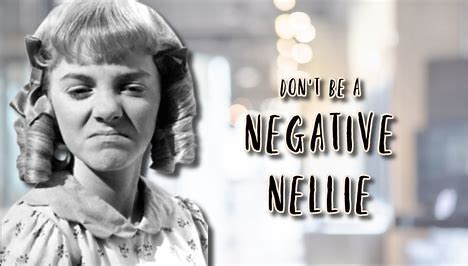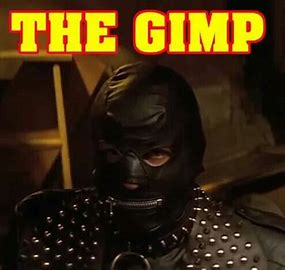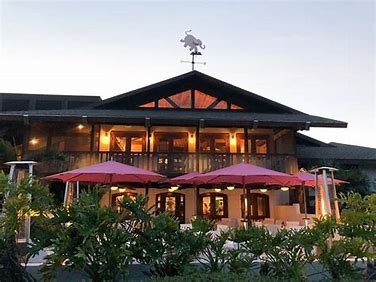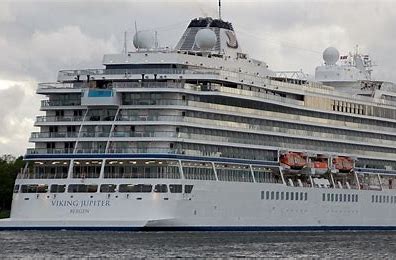I started my Sunday with a restless puppy and a couple of simple outdoor tasks. My leg was still bothering me, taking all the attention away from the balance and dizziness issues. I sat down most of last night’s neighborhood party. Everyone was concerned about how I felt, and I wish there was better news to share with them. I feel like a Negative Nelly with my complaints. The girls sang karaoke and the guys talked about plumbing issues, ailments, and cars. I’m not handy like most of them, so I try to act interested.
I have two lunches next week, which isn’t good, since I seem to be gaining about a half-pound of weight a day. Exercise has been limited by my leg, and I continue to consume cruise-like calories. Too much alcohol and sweets! I need to put lock on the refrigerators and stay home. Instead, we’re out all the time, gathering invitations for lunches, parties, dinners, and shows.
I rented a car yesterday for our August trip to Maine in two months. In six weeks, we go to Portland for a visit. I’ll start going to the gym next week, after my cardio rehab consultation, make a couple more trips to the chiropractor, see a neurologist, and continue to walk in the pool. I also need to drain my water heater and do some touch-up painting, to earn my keep at home. Hopefully, I can start to burn some calories, make these home improvements, relieve the pain in my leg, strengthen my muscles, and get back on the right diet track. My granddaughter grabbed on to the flab hanging from my bicep last week, another innocent reminder that my body is turning to mush. I’m uncomfortable in my own skin.
Tally is at the dog park, while I keep an eye on Fosse. I did very little yesterday but watch the NFL draft, Pacer’s highlights, The Sopranos, and did some limited writing. I want to get back to working on “Hungry in Hungary,” but my neighbor who’s the subject has been out of town. It’s the purpose of one of next week’s lunches. I will try my best to put Negative Nelly back in the box and make next week more productive.
A very interesting off-season for IU Basketball has led the Hoosiers to a top-20 pre-season ranking. Fans who called for the firing of Coach Mike Woodson, now have to admit the magic he’s performed in transforming a team of sure doom to one that is formidable. The final straws were the decision not to play in the NIT and the loss of the only standing recruit, five-star Liam McNally. It would have been interesting to have played Indiana State in the tourney, and to have been able to build on an incoming Hoosier star. Instead of bemoaning, “Woody” went hunting.
I admittedly wrote that it was all falling apart. There were no incoming Freshmen, a center that was certainly headed to the NBA, and two or three top players bound for the portal. However, instead of Reneau and Mgbako, who both surprisingly decided to stay, it was Gunn, Sparks, and Bates who bailed. Galloway, Leal, and Cupps renewed their commitments, soon followed by the two big men. Rice, Tucker, and Newton were the next three to commit to the stripes for ’24-’25, while the #1 man in the portal, 7-foot Oumar Ballo transferred from Arizona and Kanaan Carlyle from Stanford to solidify the starting five. Then the Hoosiers began looking for a beyond-the-arc-smith, and landed Illini sharpshooter, Luke Goode, with two more scholarships left to fill, but little playing time yet to offer.
Goode is a Ft. Wayne Homestead graduate and a basketball student of former IU star, Matt Roth. The last grad transfer to IU was Miller Kopp from Northwestern, who seemingly lost his shooting eye after donning the cream and crimson colors. Let’s hope to hear, “the three-point shot from Goode is Good!” Elsewhere during the off-season, Liam McNeeley chose Dan Hurley and UConn, Derik Queen will go to Maryland, and Boogie Fland has decided against Kentucky after the Coach Calipari move to rival Arkansas.
It’s been 7 years and 7 months since I started writing this blog, over 2765 days. I’ve fallen well behind my original pledge of a story a day, but I only have so many tales to tell. Plus, I haven’t contributed to this Creature Features category in well over a year. At this point, a couple of postings a week seems to be a reasonable goal. We have a new puppy to write about, Fosse. She is sitting in a dangerous spot right now, Tally’s chair – once mine. When possessive Tally comes back from the dog park, Fosse better retreat quickly or risk another mean growl and nip to the butt. It’s the same rude treatment that I get when I sit in my own chair.
Fosse is named after choreographer, Bob Fosse, of Broadway hits like Chicago, Cabaret, and All That Jazz, some of my wife’s favorites. One of his trademark moves is “Jazz Hands,” that my granddaughter recently demonstrated during a performance of “Bye, bye, Blackbird,” at the high school Spring dance recital. All the performers were dressed in black with white gloves, to emphasize the hands. My granddaughter somehow forgot to put hers on in the rush to get on stage – at least I could tell who she was under the top hats they were all wearing! Fosse himself apparently didn’t like his hands, so he always covered them, but ironically the white gloves made them stand out in signature fashion. Fosse the dog’s tiny ears, like all schnauzers, tend to flop like Bob’s distinct jazz hands – hence the puppy’s name.
Her unique name is often a conversation starter with passer byes in our neighborhood. Fosse has only been around schnauzers, so from her perspective other dogs naturally deserve to be barked at if they intrude. This bark often sounds like a high-pitched scream or squeal if she feels threatened, which is too often the case with bigger dogs. It’s an annoying habit that needs to be controlled, otherwise she’s remarkedly well behaved and even potty-trained. However, like most puppies, she needs to go out frequently. My wife and I now stagger our social schedules to accommodate for this. Last night, I went out for happy hour and came home early, while she went to an outdoor concert a few hours later. It gave me a chance to watch the end of the thrilling Pacers overtime victory over the favored Bucks.
Fosse does sleep through the night in her cage, but can stir a bit early, if she hears my wife get up. Fortunately, she does not respond to my all too frequent trips to the john. I, of course, was not in favor of two dogs, but it will be good for Tally, who is much more active now protecting her property, stealing food, and feeling jealous from time to time. Fosse has already earned her spot as a welcome member of my family and the newest subject of this blog.
I never had much of a memory for movies, TV shows, and books. I watch or read but don’t retain. This is why I record them in my daily diary and on this blog, so I can check back to see when and where I last watched. Years ago, I had a thing about watching or reading the same author or director’s work twice. As has become painfully clear these past few years, I usually don’t remember a thing about what I’ve watched or read in the past. Bottom line – it makes no difference if I’ve read or seen it – it’s all new to me.
Unlike others that can repeat the lines from memory and can recall what actor or actress played each role, I often can’t remember even the plot, let alone the cast. A good example is the series, The Sopranos, that I’m watching for at least the third time. I saw a friend’s post on Facebook that prompted me to turn it on, thinking it had been decades since I watched. It turns out it’s only been five years, with references in this blog and in my diary. Sure enough, it’s like viewing a new release, although a few bits and pieces strike a chord.
I’ve always loved envisioning myself as a Gangsta’. Maybe I was in a past life, but like everything else, I can’t remember. Indeed, my life is like a movie, with only bits and pieces recalled. This is likely why I’m so diligent about writing things down, wishing I had started sooner than twenty-five years ago when I began my daily diary entries. I can easily search back over time, now knowing that I last watched the Sopranos with my wife in our downtown Portland apartment back in the Fall of 2019. Next, we started the “Goliath’ series, went to a matinee of “Lighthouse,” and spent a quiet Halloween without any trick-or-treaters. Both of my wife’s daughters got married and soon Covid kept us isolated from everyone. Thanks, Dear Diary, for the memories!
I need to do some walking since it’s really the only exercise I can do, but I continue to struggle with a Charley horse in my upper left thigh. When it strikes, I have to drag my leg like “The Gimp.” It’s quite painful and frustrating, as I continue to recover from open heart surgery. My chiropractor worked on me twice this week, but it has yet to heal, and the cause is only speculation since I have done nothing to injure it. Also, the results came back negative on my MRI, so I’ve yet to find a solution for my balance and lightheadedness issues. It seems to be one thing after another on the road to recovery. One solution has been to walk in the shallow end of the pool where I can steady myself on the edge. However, it’s not burning the calories necessary to lose some of this cruise weight.
I’m in the doghouse, after agreeing to a beer with a neighbor and trying to move our Friday “Date Night.” Just when I thought there was a solution the night before, my granddaughter announced that she had forgotten to tell us about her Spring Dance Recital at the high school. Where I thought I was picking up my youngest granddaughter at the bus stop, those plans have suddenly changed, as well. We never seem to be in the know until the last minute, and my wife is a planner. There always seems to be something that screws up her plans like me and my family. She and Tally are at the Dog Park this morning, while one of us will need to stay home to watch the dogs during tonight’s recital. It’s complicated, as most family matters are!
The Gimp’s in the doghouse, and the dogs rule the hen house! In the meantime, I’m limping down the yellow brick road as the Cowardly Lion, with no one to pin a medal on me. The Wizard of Oz has already proven that I have a heart (though just repaired) and a brain that after recent tests seems to be functioning properly. Just give me the courage to face another day without running or even walking to keep me sane.
It’s the start of week 14 of surgery rehab, after a few setbacks in unlucky 13. I just got back from the chiropractor and have an MRI scheduled for this afternoon. In both cases, they’re looking for reasons why I’m experiencing balance, circulation, and dizziness issues. I had a good afternoon of exercise yesterday in the pool but have some muscle issues in my left leg that makes it painful to walk. Walking is really the only exercise I’m cleared to do, so doing it in the pool allows me to steady myself on the side and move my legs without pain. I’ll do the same thing this afternoon, since trying to walk this morning was once again difficult.
While we were on the cruise, I had the same leg problems, so getting home and using the pool is a good alternative until the strain goes away. It’s miserable trying to stretch out my muscles while walking, and I need to walk to burn the calories! I’m still restricted from using my arms and lifting. I placed a call to the cardio rehab facility, hoping to reschedule my initial session next week now that I’m feeling better. Last week, I had bouts of nausea and vertigo, not knowing if I had picked up a bug from the trip or perhaps had a more serious disorder. I did manage to pull myself together this past weekend for our anniversary dinner and neighborhood martini party. Maybe I’ll get more answers from the MRI tests?
I was doing well on the walking discipline while we were aboard the ship, but land has not been so friendly. It feels as if there’s a cramp in my calf muscle coupled with a soreness in my thigh. I’m scheduled to go back to the chiropractor in two days, as I resume my weekly visits that kept me healthy while running. I’ve been absent nearly two months between the heart surgery and cruise. Daily running has now become walking. Don’t Run…Walk.
It’s been a tough week since returning from our cross-Atlantic adventure. I haven’t felt much like sitting down at the keyboard after bouts with dizziness and nausea. Initially, I thought I might have Covid, but the test proved negative. I sat down at my desk on Monday and the room began to spin. Maybe in the back of my mind I was suffering from Tax Day, but I had already sent in my pound of flesh before the trip. My wife was playing bridge, while I watched our new schnauzer puppy, Fosse and her sister Tally. Otherwise, I was ready to settle into a homebound routine. By dinner time, I had the chills, lost the chocolate that filled my stomach, and couldn’t maintain any sense of balance.
I was hard pressed to remember the last time I was this sick, undoubtedly vulnerable after heart surgery. I was soon in bed under a pile of blankets but still couldn’t control the chill spasms that racked my body. Also, my head was pounding like the Iron Claw had a death grip on me. In the past, I would have probably recovered by morning, but the day was spent on the couch with a diet of plain toast, rice, and sips of Gatorade. My wife picked up my grandson at the bus stop and prepared for her first day of school in more than a month. She also had an evening Zoom meeting with her former high school classmates as they finalized details for their 50th reunion. I struggled to set up the computer.
Wednesday wasn’t much better. Dog duty was a hassle, and the grandkids were coming over to see the new puppy. We ordered for Pizza Boss delivery. I took a couple of Nyquil Cold & Sinus Nighttime tablets to knock me out. By morning, I suffered another relapse and made a doctor’s appointment. All the energy I had went into binging of the Stormy documentary and the series, Truth be Told. I tried to go for a walk but was just too weak and unsteady. I was not looking forward to driving my wife to and from school the next morning, along with picking up my grandson, and running a slew of errands in between. There would be no time for a nap before our Borrego Street get-together in the evening.
An early alarm set me scurrying for dog duty, followed be a quick shower and drive to school. The doctor then scheduled me for a MRI, wanting to take a look at my inner ear. I picked up a prescription for Dramamine, got a haircut, shuttled my wife home, mailed a package, and delivered my grandson home from the bus stop. It turned out to be a nice evening with the neighbors, but I had little energy.
Today is our 23rd wedding anniversary. We were married in Las Vegas at the Bellagio. My wife had already bought herself some pearl earrings on the cruise, claiming them as an early gift from me. We’re headed to the Pink Elephant in Boca Grande for dinner. I wrote this poem to celebrate the occasion:
Pink Elephant
Not too much to drink,
Or a hallucinogenic pill.
I saw a Pink Elephant,
And it was a thrill.
We dined there, too,
In a romantic light.
As the sun sets,
On our anniversary night.
Gasparilla Island,
Surrounded by Gulf.
Where the privileged play,
Tennis and golf.
No more pirates,
Just Bush and Saban.
Snowbirds abound,
A tropical haven.
Boca Grande,
With its beaches nearby.
As we drove the miles,
Under a sunny Blue Sky.
It’s the perfect spot,
For a Twenty third.
No flying Elephants,
Bird is the word.
I want to express,
My love for you.
Because of all,
The things you do.
My wife, best friend,
And nurse of late.
Travel companion,
And dining date.
You cook and clean,
Without much help.
While mothering two pups,
The newest full of “whelp.”
My go-go girl,
You’re always busy.
Maybe it’s you,
Making me dizzy?
Afternoon bridge,
Aqua-fit and tap.
While elderly me,
Takes a nap.
You thrive on friends,
And party planning.
And if there’s time,
Poolside tanning.
You love the beach,
And your golf cart.
Thanks for giving,
Your whole heart.
I couldn’t ask
For any better.
Lover, Looker,
And Go-Getter.
Twenty-four hundred miles,
From where we said I do.
I’d do it all again,
As long as it’s with you.
Copyright 2024 johnstonwrites.com
Ramblings from a Traveler
On the way,
To Barcelona.
Leaving our house,
For Peter and Mona.
Four Continents,
In thirty days.
Eight Ports,
But short stays.
Dress slacks for dining,
Were required each night.
But with only one pair,
I packed a bit light.
We land in Buenos Aires,
St. Pat’s Day Parade.
But missed all the parties,
As jet lag made us fade.
After heart surgery,
Can’t carry a bag.
Plus, my pace,
Tends to lag.
Carnaval Show,
In Montevideo.
And when at sea,
On walks we’d go.
Rio de Janeiro rain,
Pancho Giant Jesus?
Luz does her best,
To try and please us.
Hot and muggy,
Bad tour of Recife.
Lost our guide,
Kind of a relief,
Equator crossing,
Kiss the fish.
Sky full of stars,
Make a wish.
This Viking journey,
With Cindy and Pat.
With all this food.
We’re sure to get fat.
Double Cappuccinos,
Unlimited wine.
A glutton’s delight,
All “Mine Mine Mine!”
Pat had a birthday,
Another wine toast.
As we were approaching,
The African Coast.
Caprese and Gelato,
Almost every night.
But the other courses,
Made my pants get tight.
Five full days at sea,
I tried to keep my steps up.
But devoured those bone-ins,
One too many pudding cup!
Through Good Friday,
Another deck lap.
Afternoon bridge,
While I took my nap.
Paolo’s covers,
The Viking band.
Piano Tim, Jakub’s bow,
When no place to land.
Explorers’ Dome,
3-D and cocktails.
Movie Popcorn,
Talks about whales.
Sao Vincente bus,
Cobblestone roads.
Snake to the top
For a shot of Ponch.
Easter Sunday,
April Fools jokes.
Chocolate bunnies,
But sugar-free Cokes.
Casablanca docking.
Classic movie words.
Boobies everywhere,
Too bad they were birds.
Losing my debit card,
I guess I’m one, too,
A visit to the doc,
And scaring you.
Rock of Gibraltar,
In the midst of the night.
All that I saw,
Was a flashing light.
Next stop Malaga,
Picasso’s birthplace.
And as a young boy,
Sketched his first face.
An overcast Barcelona,
But still quite unique.
Sagrada Familia church,
With peak after peak.
Gaudi is gaudy,
Kings too haughty.
Cathedrals lawdy.
Flamenco naughty.
The time kept on changing,
Our clocks never right.
A mall fills the arena,
Where bulls once did fight.
Never enough Euro,
To pay the fee to pee.
And there was no water,
Though right on the sea.
All of the fountains,
Were bone dry.
So there was little urge,
When I strolled by.
Hop to Mallorca,
For an extended stay.
Dozed by the pool,
While spring breakers play!
Placemats and magnets,
The shopping goals.
Our Son Antem villa,
Amidst eighteen holes.
Needed Fire Starter,
For burgers on the grill.
Denise made the meals,
With master skills.
We rent a Bimmer,
Parking a bummer.
The tormenter turns,
A knuckle numb-er.
No annoying horns,
But cyclists everywhere.
Not good at sharing,
Pass if you dare.
Narrow parking rows,
Mediterranean views.
Dancing Panda,
Shops full of shoes.
We hopped on,
But off -not too much.
Except when we,
Were hungry for lunch.
Port de Pollenca,
Miles of blue.
Romantic Lunch
Just us two.
We met our British friends,
On a Plaza to dine.
Dinner was affordable,
But not the parking fine..
Two trips to the airport
Six bags plus carry-ons.
Bolduman donuts,
Early morning yawns.
Tour Barcelona,
Renaissance night.
Spanish paella,
Six movie flight.
Home at last,
Back in our bed.
To travel again,
We need more bread.
Copyright 2024 johnstonwrites.com
As an Indiana University basketball loyalist, I rarely offer kudos to other college programs, let alone those in the East. I know that over the course of time, jealousy will prevail, and I will learn to hate the man. However, I wrote about their success with my “Rule of 60” last year, and this year is no different. Dan is the new Bobby, and I don’t mean his dad or brother. He’s the new Robert Montgomery Knight. Since the departure of Knight from the Hoosiers, no team has exemplified the power of 60 any better. Plus, he’s doing it while battling the never more popular three-point shot.
Last year his Huskies beat San Diego State 76-59 to win it all. This year Purdue was the victim of his defense 75-60. From an offensive standpoint, the 1967-69 UCLA Bruins and their legendary Coach, John Wooden and Hurley’s 2022-24 UConn squads are the only other teams to win back-to-back titles by 15+ points. Knight was never able to join the back-to-back club, although he came close in 1974-1976, joining Wooden with an undefeated National champion. Neither of those coaches played 40-games in one season like UConn.
In that 40-game span this season the Huskie defense held opponents to 60-points or less 17 times, winning each time to finish 37-3, including Indiana 77-57. Of the six NCAA Tourney games that UConn played, 5 were won in this manner, plus two of three in the Big East Tournament. They capped of the season with “Magical” victories over three more BIG teams, 75-58 over Northwestern, Illinois 77-52, and Purdue75-60.
The three games the top-rated Huskies lost were at Kansas 69-65, at Seton Hall 75-60, and at Creighton 86-66. The Pirates, who went on to win the NIT, were the only team to reverse the 60 “magic” on UConn. The BIG East, lived up to being the BIGGEST Conference of all, winning both major post season titles, another fact I hate to admit.
When it comes to the three setbacks, well anyone can have a few bad nights, especially on the road. The first one this year was at Kansas when the Jayhawks got to 60 first at 61-54, just ahead of the final media timeout. Hurley’s Huskies shot a season-low from the three-point line but made 11 of them to stay in the game. UConn pulled back within two late and had a look at a 3-pointer to take a lead in the final seconds, but it rimmed out and KU was able to ice the game.
Conference foe, Seton Hall, got to them next in decisive fashion 75-60, performing a little reverse magic. The Huskies finished 22-of-58 (37.9 percent) from the floor and 4-of-21 (19.0 percent) from 3-point range. Conversely, Seton Hall shot 29-of-56 (51.8 percent) from the floor and was 3-of-8 from 3-point range. In the home rematch a few weeks later, “Dan the Man” Hurley got revenge, 91-61.
In the third and final loss, before their 13-game run to the Championship, UConn ran into a Creighton buzzsaw 85-66 in Omaha, their last loss of the season. The Huskies were-out shot 44.1 percent to 54.7 percent, but the game’s key difference came behind the 3-point line – UConn shot 3-of-16 (18.7%) from deep while Creighton finished 14-of-28 (50%).
Congratulations to the Huskies and while I’m being a good sport and handing out accolades to the enemy, I’m also envious of the rival Purdue Boilermakers. Coach Matt Painter rallied the team from last year’s disappointment. However, UConn was just too much, but that doesn’t take away from a great Purdue campaign, while reaching their first NCAA Championship game in 64-years and adding a sweep of the Hoosiers. Until the start of next season, “Boiler Up!”
I walked back to the Marriott resort center first thing in the morning, but the rental company had no cars for delivery that day, and suggested I grab a cab to their offices in Palma. The driver took me to the wrong location, so I had to walk the extra blocks in search of the right place where the rental agreements were signed. I had no access to GPS, internet, or Spanish language skills and spent the rest of the morning wandering aimlessly in my BMW SUV. After many wrong turns and fruitless conversations with non-English speakers, I stopped at a CEPSA gas station and got directions. Somehow, I made it back to our Villa.
Our friends, fortunately, had GPS service and directed us back into Palma to visit the Catedral-Basílica de Santa María de Mallorca and the Royal Palace of La Almudaina. Parking was a nightmare as I tried to familiarize myself with the BMW and navigate the narrow underground spaces in the crowded garage. After this experience, the men decided to sit in a café drinking cappuccinos at Palau while the women did the tours. We all then walked across the plaza to a sidewalk table at Dalili for pizza, caprese, and gelato. The drive back to the resort was less stressful, but only three of us ate the chicken dinner my “younger” wife prepared while us three septuagenarians napped.
Our travel companions were under the weather the next morning when we planned to drive to the North coast of the island. My wife and I traveled alone to Cap de Formentor where we battled thousands of cyclists, hundreds of tight curves, narrow roads, and steep drops to get to the top. They apparently come in droves to train for the Tour de France. For me, it was white knuckles from top to bottom, so the spectacular views were not worth it, so I was glad to stop for lunch in Port de Pollenca at the Hotel Miramar. I was relieved to get a break from the stress of the mountainous rollercoaster, while gelato on the beach overlooking the surrounding marina offered a picturesque change of pace. It was then an hour back to the villa and a quick change for dinner.
Unless it is to warn a driver or avert an accident, horn use is illegal, according to Spain’s highway code. It makes city driving very peaceful unlike the horn-crazy U.S. drivers. The government also offers free public transportation to residents in an effort to reduce traffic congestion. Plus, they love to ding us tourists with parking violations and make it difficult to pay the fines, a boost to the economy. My advice: don’t park in the Blue zones without a permit. It cost us a 45 Euro fine to go to dinner at Quina Brassa in Llucmajor on Placa Espanya. This open plaza is where we met our British friends for dinner, conversation about our Egypt trip together last year, and Herbes de Mallorca, an anise liquor nightcap produced on the island.
With our friends feeling better in the morning, we once again took the rental car into a relatively less-congested Palma for a Hop- On-Hop-Off tour of the city, with no hopping off. Lunch at Tapas Palma and shoe shopping followed. I watched the giant, dancing Panda strip out of his costume for a smoke. The street venders rolled up their blankets and scattered as the police made an appearance, but quickly set up shop again in once the all-clear was signaled. We retreated back to the villa to pay my parking fine and dine for the final time. A last load of laundry, our two remaining bottles of Mallorca wine, and packing for departure led to a short night’s sleep.
I was up at three, our final day in Mallorca, preparing for two trips to the airport. Our BMW rental would not handle four adults, six bags, and carry-ons. My wife was my first drop-off with luggage before I headed back for the other two passengers. They helped me find a gas station before their exit at the terminal. I returned the rental car to SIXT after a solo ordeal on the poorly marked, dark, roundabouts, another challenge without language skills. Finally, the four of us were back together for check-in, security, and takeoff on our hour-long Yueling Airlines flight back to Barcelona.
A taxi at the Barcelona airport shuttled us to the Renaissance Fira for our last look at the city. First, however, we needed nourishment, so we turned to the Boldú Bakery and their unique glazed donuts in the shape of a plump little men, choosing caramel, chocolate, and raspberry fillings. Upon arrival at the hotel, we were told that our rooms would not be ready until late afternoon, so we cabbed to the Hop-On-Hop-Off for several hours of cruising the sights. Lunch for me was an authentic Spanish seafood paella, while happy hour took place on the roof of our hotel, 27 floors up, with panoramic views of the city and palm trees. It was then a sad moment of goodbyes to our travel companions as we went our separate ways home in the early morning.
A unique high-tech room at the Renaissance, all white with a curtain surrounding the king and a single on the other side. The nightstand tops were under-lit and bedside switches controlled the window shades. The large tub drained from the center. We entered from an open hallway with a 25-story drop through a heavy glass door. It did not appeal to my fear of heights.
It only took an hour to get to the airport, through security, and past immigration, so we had two hours to wait for our United flight to Newark. Pans & Company was the only option for breakfast, as if I needed to add more fat to my frame. In total, we’ve been away from home for a full four weeks, and I’ve probably gained ten pounds. It will be good to get back into the home routine, although we have three neighborhood parties to attend and an anniversary to celebrate at the Pink Elephant.
Barcelona to Newark was the first leg. Watched five movies: The Iron Claw, The League, Last Goal Wins, Anyone but You, and the 38 at the Garden documentary about Jeremy Lin. Security was a mess in Newark, a long wait even in TSA-Pre, following the AirTrain and shuttle bus to finally get to our Terminal then gate. It was a good thing we had plenty of time between flights, especially after a 45-minute mechanical delay once we had already boarded in Barcelona.
During the final leg to Tampa, I watched the movie, “Priscilla.” A poem of our overall adventure is in the works. My neighbor friend was waiting at the airport and got us home by 10pm to sort through mail and get organized for bed. The Party’s Over!









